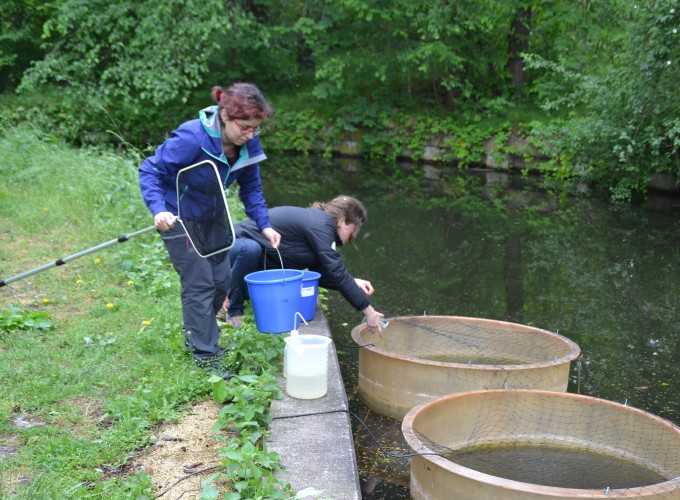Experimental tests of fish predation on zooplankton, and recovery rate of zooplankton community structure after stop of predation

Experimental tests of fish predation on zooplankton, and recovery rate of zooplankton community structure after stop of predation
Abstract
Mesocosms, outdoor experimental system that examines the natural environment under controlled conditions, can be regarded as enclosures which contain the main organisms of freshwater ecosystems and mimic the responses of natural systems to experimental manipulations. They offer great opportunity to observe and control complex interactions in aquatic ecosystems. Recently, we published an article in PloS ONE, from the results of a mesocosm experiment conducted in collaboration with the Leibniz-Institute of Freshwater Ecology and Inland Fisheries (IGB). Planktivorous fish graze on big zooplankton which are the filter feeders and improve water quality in aquatic ecosystems. Thus, fish predation can indirectly influence negatively the water quality through the trophic cascades. However, we do not know how the zooplankton community would recover and return to the state before fish predation. In order to understand the resilience of zooplankton, we conducted a mesocosm experiment. The experiment consisted of treatment with fish and no fish, which are control enclosures. After allowing the fish to graze on zooplankton for 4 days in fish treatments, we removed the fish and observed the change and recovery in zooplankton community structure for 4 weeks. We observed that the small zooplankton dominated and some of the large zooplankton such as calanoids did not appear again after fish predation. This caused higher phytoplankton yield, thus low water quality in the fish enclosures than in the controls. Our results are important to understand the resilience of communities to global climate change, with which higher fish abundance and predation is expected. These results can play key role in conservation and restoration of the aquatic ecosystems.